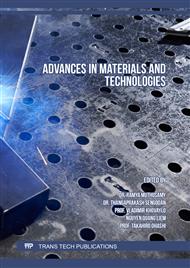p.37
p.49
p.59
p.67
p.75
p.81
p.87
p.95
p.103
Towards a Model-Based Approach for the Optimization of the Mechanical and Economical Properties of Laser-Based Plastic-Metal Joints
Abstract:
The application of laser-structured metal surfaces to combine plastics and metals is a promising option to enable low-cost lightweight and resource-efficient multi-material joints. The mechanical properties (especially strength), as well as production time and costs, depend on the microstructure of the metal surface (e.g. the number, distance and shape of cavities). Thus, in order to design optimal joints, the properties from the mechanical, as well as production and cost domain, must be considered simultaneously during product development. Therefore, in this paper, a model-based optimization approach is presented with the goal of identifying an optimum between the strength of the joint and laser manufacturing costs. Parameterized models for the strength estimation, as well as calculation of laser manufacturing time and costs, are developed. The models are linked in an optimization workflow and the optimum positioning and shape of the cavities on the joining zone is determined using a genetic optimization algorithm. The results show that, compared to a benchmark, the manufacturing costs can be reduced by 82 % for the same strength using the proposed model-based optimization approach.
Info:
Periodical:
Pages:
75-80
Citation:
Online since:
November 2022
Price:
Сopyright:
© 2022 Trans Tech Publications Ltd. All Rights Reserved
Share:
Citation:



